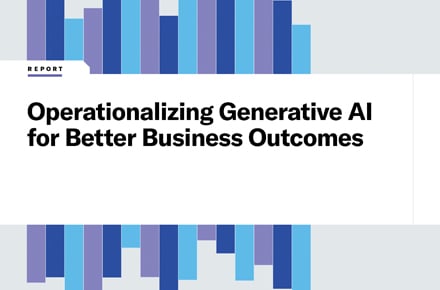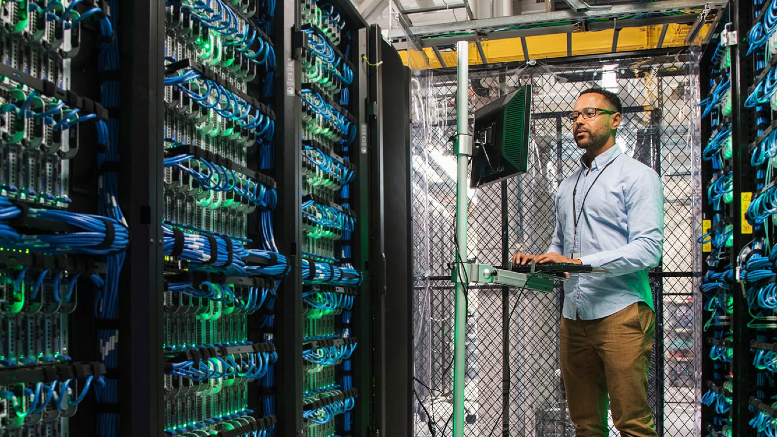Where’s agentic AI going? Our experts share insights
October 24, 2025 / Unisys Corporation
Short on time? Read the key takeaways
- All the talk about agentic AI can result in inaction if you’re unsure of the right moves for your organization, but Unisys experts can help.
- Agentic AI can drive workplace productivity and collaboration if you implement it strategically within your organization.
- Continuous upskilling and reskilling of your employees can diminish the impact of the AI talent shortage.
- Complex AI computations take significant cooling resources to prevent data center overheating, but liquid cooling promises a path forward over air cooling.
With agentic AI evolving rapidly, organizations need clear guidance to move from experimentation to implementation. Through extensive client work and industry research, we’ve identified the strategies that separate successful AI adoption from well-intentioned but stalled pilots.
We've shared these insights across multiple industry publications. Here are the key takeaways that can guide your AI journey.
Drive productivity and collaboration in the booming agentic AI market
Agentic AI has grown enormously and cemented its place as a business imperative, according to Unisys’ Weston Morris in the CXO Today article “Making the Leap: How Agentic AI is Transforming the Future of Work." Approximately 84% of employees we surveyed shared that AI-driven automation can streamline routine tasks. They can redirect their time to tasks that require more creativity, collaboration and strategic thinking.
During an interview in CXO Today, Weston shared how agentic AI can contribute to workplace productivity:
- Workflow optimization and task automation
- Security operations
- Diagnostics support and treatment recommendations in healthcare
- Customer service improvements with smart conversational agents capable of open-ended adaptive conversations for better problem-solving
- Personalized client engagement by detecting their communication preferences, instrumental in high-touch areas like luxury goods
Most importantly, shift your thinking from one-off projects to ongoing programs to achieve agentic AI success. This means establishing strong security and compliance practices, ensuring the data feeding your AI models is clean, and developing practices for long-term updates, maintenance and management.
AI-dedicated leadership can also have a major impact, according to Unisys Senior Vice President Patrycja Sobera in the Unleash article “Unisys: 3 in 4 executives say workforce not sufficiently AI skilled.” Of companies with a chief AI officer interviewed for our AI survey, 86% reported significant time savings. A chief AI officer can establish a comprehensive AI strategy. But what does strategic AI implementation look like?
Achieve sustainable success with strategic AI implementation
Integrating AI successfully into your operations takes careful planning, with strategic implementation more important than rapid deployment for success, according to Weston Morris in The HR Director article “Harnessing the power of AI: Best practices for workplace implementation.” This minimizes the chance of AI failures and lost employee and customer trust. It’s especially crucial in industries like healthcare, where AI promises the biggest boost to efficiency.
Weston walked through the strategic implementation steps:
- Taking a data inventory and cleaning and structuring it to optimize your AI inputs
- Maintaining data quality through robust data governance policies, such as validation and data archiving rules and ongoing monitoring
- Investing in IT infrastructure to smoothly integrate AI solutions
- Train employees to use AI effectively and encourage best practice sharing
- Measure AI success with metrics that reassure you of business goal alignment
A chief AI officer can play an essential role in steering strategic AI adoption, including by leading the upskilling and reskilling of employees so they can make the most of any AI technology investments. Creating this role within your organization can give you the competitive advantage crucial to your business success.
Address the AI talent shortage through continuous learning
One of the biggest barriers to realizing agentic AI’s potential is the critical lack of skilled AI professionals and the ongoing talent shortage. AI job skills are evolving 66% faster than the skills of other jobs, according to Unisys’ Weston Morris in the Workplace Insight article “Why winning the AI race starts with workforce readiness.” That’s a major increase from last year’s 25%. AI and machine learning engineers are highly sought after and represent the largest talent gap.
Continuous learning is the only sustainable solution to close the skills gap because organizations need to reskill employees to use AI effectively. In fact, future-proofing your workforce in this way is a business imperative. Thankfully, many employees want to grow their skills, with our AI research revealing that almost 80% of employees believe AI skills will advance their careers. The key is to train workers across all company levels, regardless of job titles or seniority.
This training includes overcoming employee misperceptions about AI’s role in the workplace, according to Unisys’ Patrycja Sobera in the Business Reporter article “Strengthening employee perceptions of AI.” Rather than widespread job losses, AI will open up new opportunities and career pathways for employees who embrace it. She recommends organizations make a few moves:
- Establish strict processes for AI usage that support technology usefulness, employee growth and satisfaction
- Develop leadership oversight practices and a clear vision for how employees use AI
- Consider appointing an AI officer for even more positive results
One sign that a technology is popular is when employees implement it without getting proper approvals. Ensuring they do is part of training. Bring your own AI (BYOAI) involves employees using AI technology that hasn’t been approved by their company, meaning exposure to data loss, legal and security risks, according to Unisys’ Digital Workplace Solution Director of Collaboration Richard Owen in The AI Journal article “Navigating the risks of AI: ‘Bring your own AI culture." Mitigating BYOAI risks includes usage policy enforcement.
Support AI’s computational demands on your infrastructure
Most data centers use traditional air-cooling systems to avoid overheating. Training AI models and powering complex AI computations strain data center infrastructure due to high resource requirements, and it’s expected to grow as AI is used in everyday work and life. Those that use air cooling spend about 40% of their energy on cooling alone, according to Unisys Director of Products and Solutions, Digital Workplace Solutions, Vivek Swaminathan, in the Data Center Review article “How OpenAI is fueling the liquid cooling boom.”
Vivek said in the article that liquid cooling holds promise as a more sustainable, efficient solution while maintaining data center performance. Such systems also take up less space, are more capable of dissipating heat and can be targeted more easily at specific CPUs and GPUs. Liquid cooling does have complex plumbing and coolant management challenges, but the investment pays off.
“Liquid cooling isn’t just an option; it’s the backbone of long-lasting AI growth,” Vivek wrote. “In the AI-driven future, staying cool isn’t just an advantage. It’s survival.”
Advance your organization’s agentic AI moves
We love talking about the promise of agentic AI and will continue connecting with online publications to share our expertise on the technology. It will significantly impact hybrid work, talent development and business innovation, and you can experience these advantages with strategic adoption, continuous learning and technological investment.
Download our data readiness for AI guide for practical moves, including four data maturity stages. Unisys experts and AI solutions can ensure your organization embraces AI thoughtfully and proactively so you can lead in an AI-focused future.




















